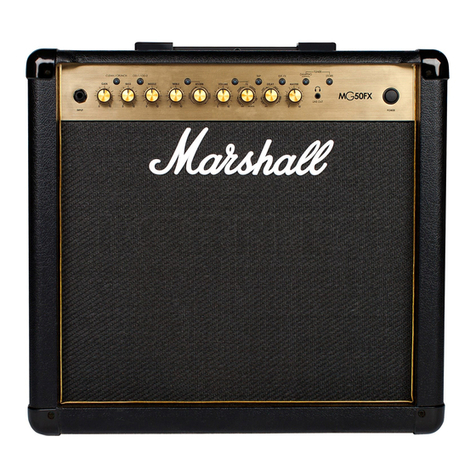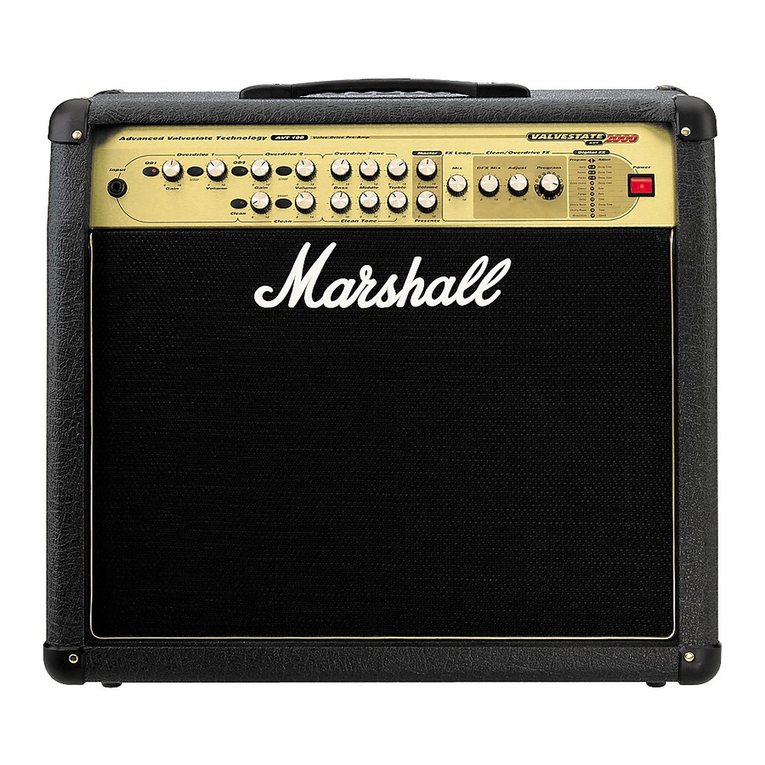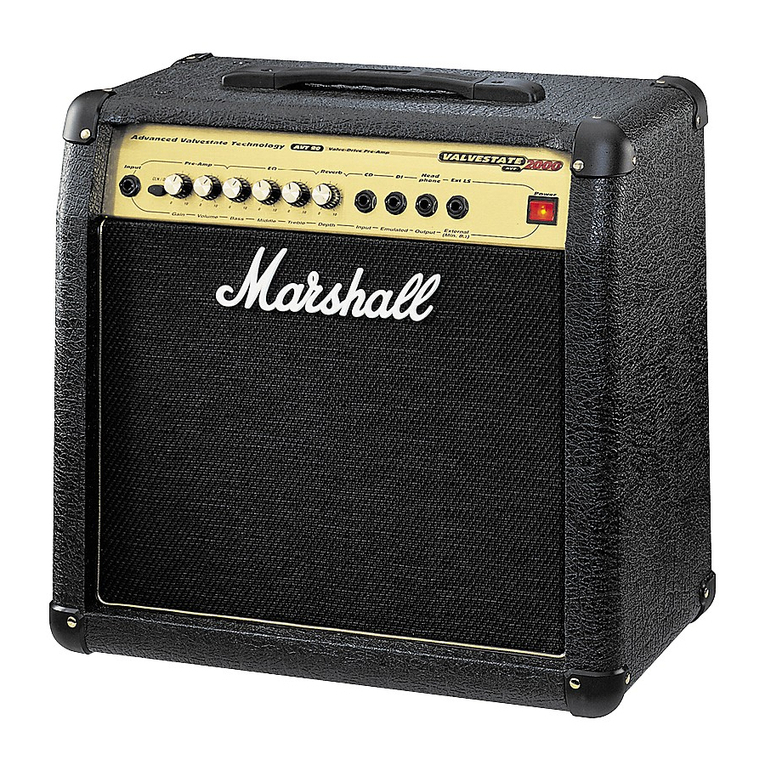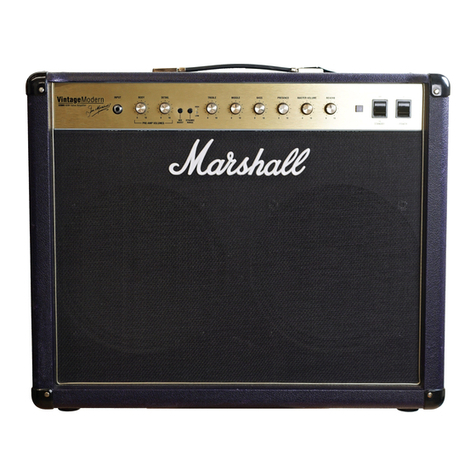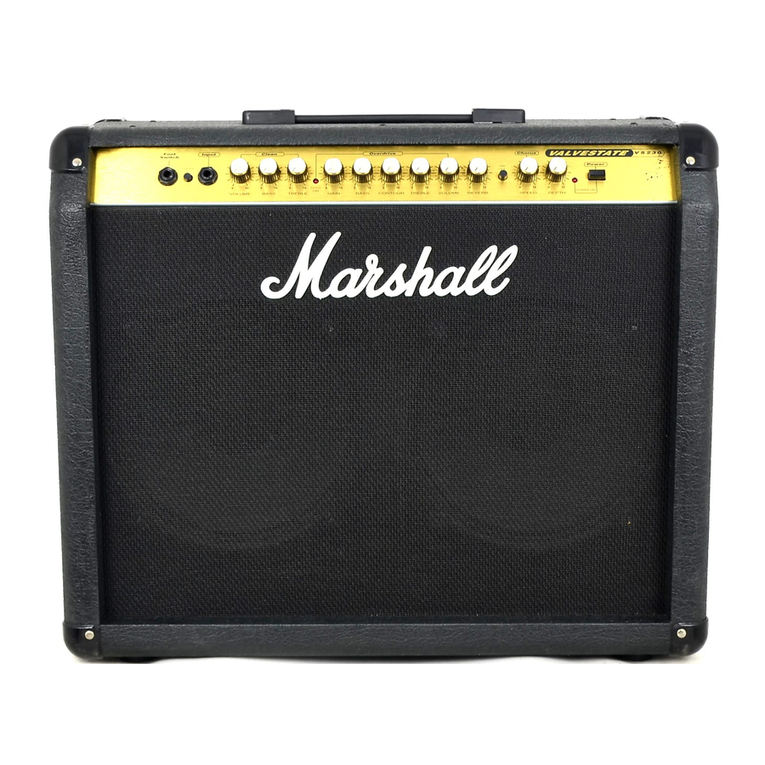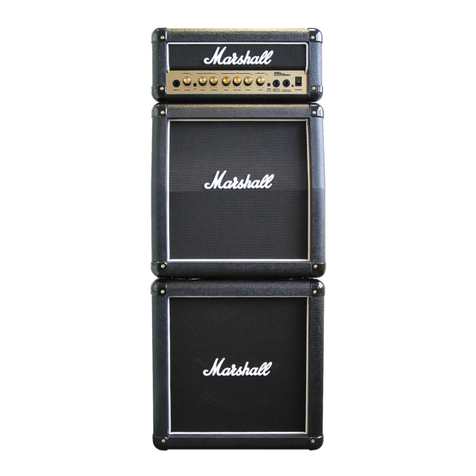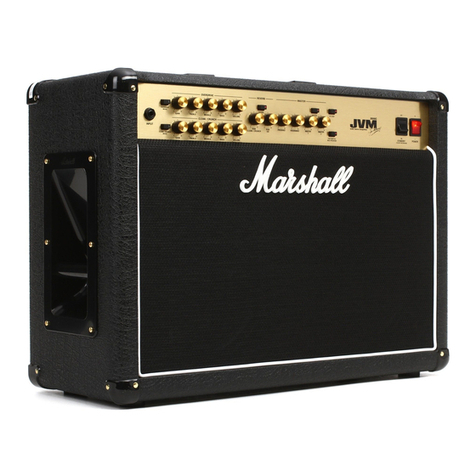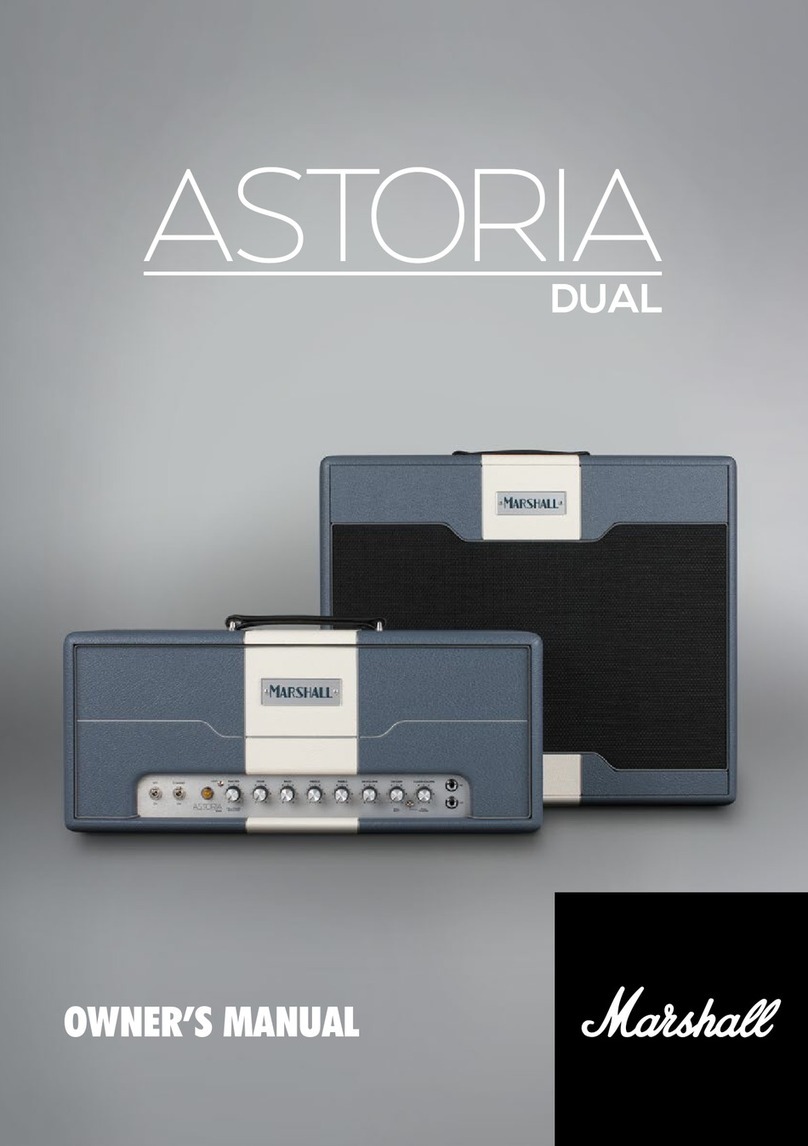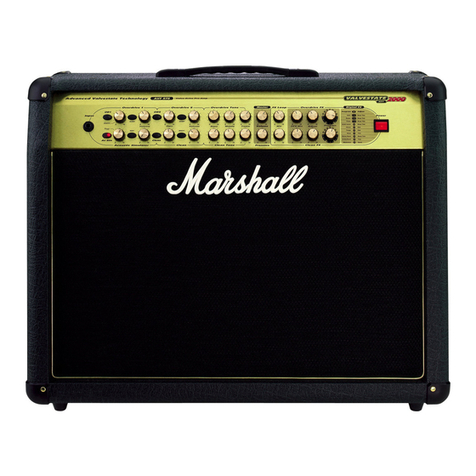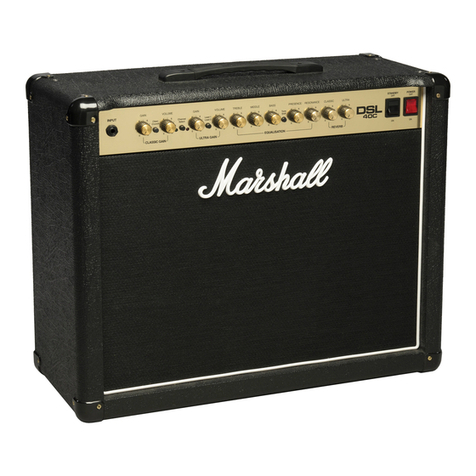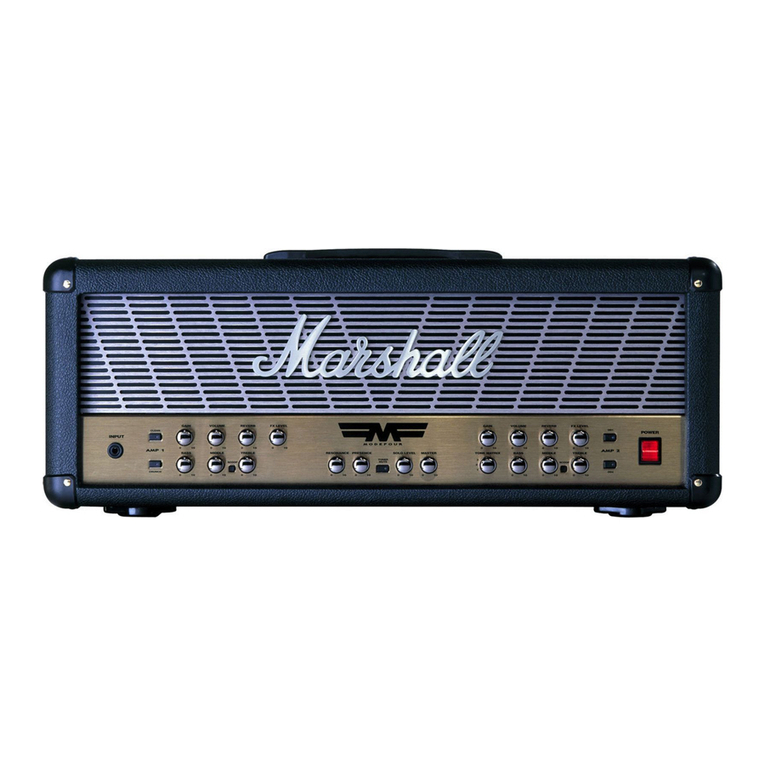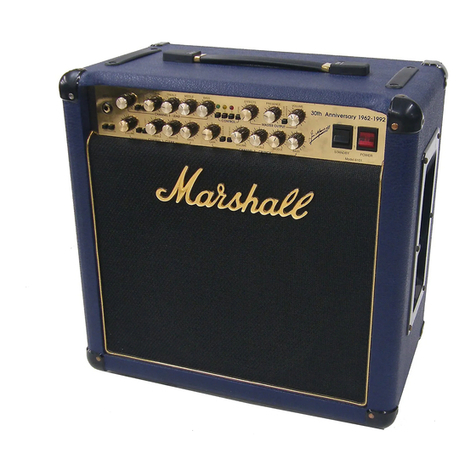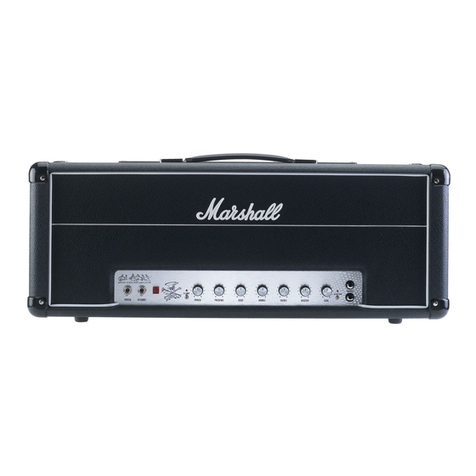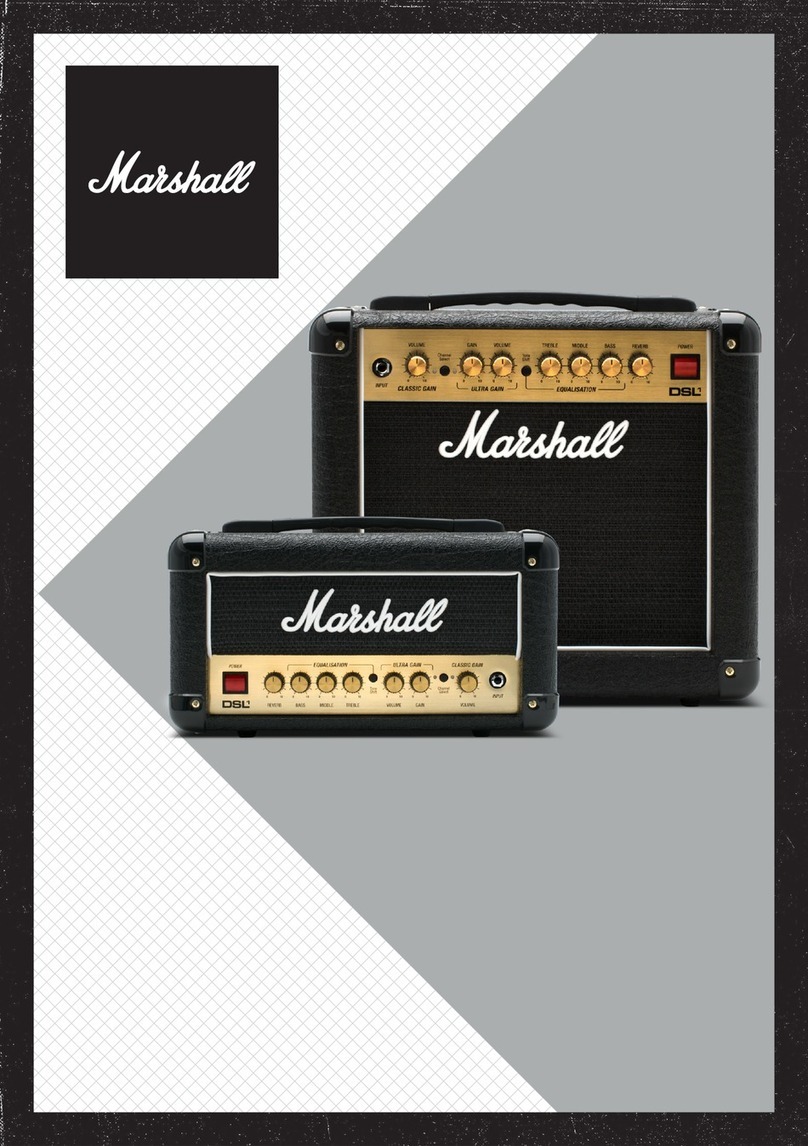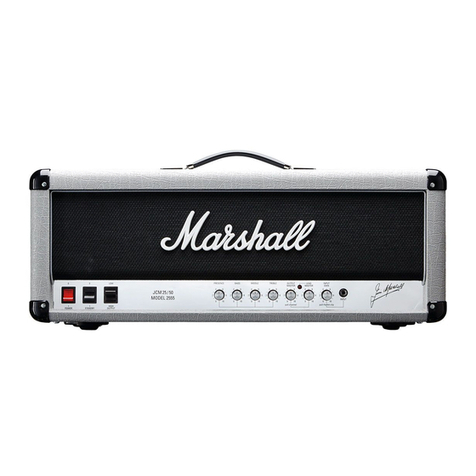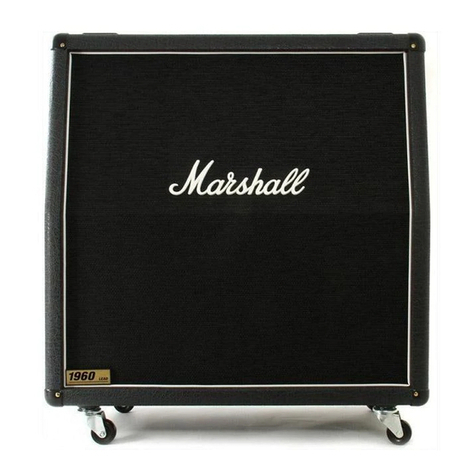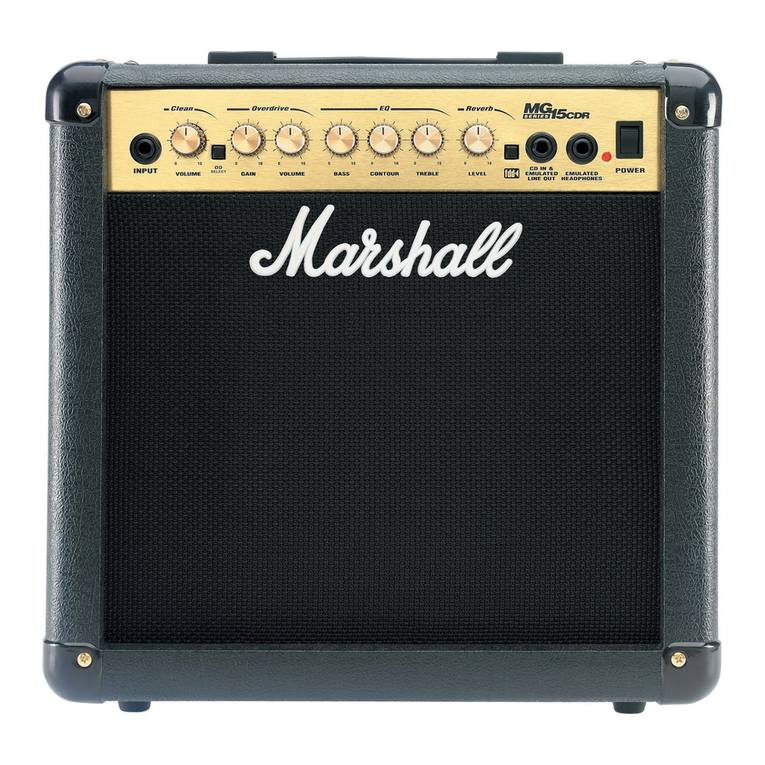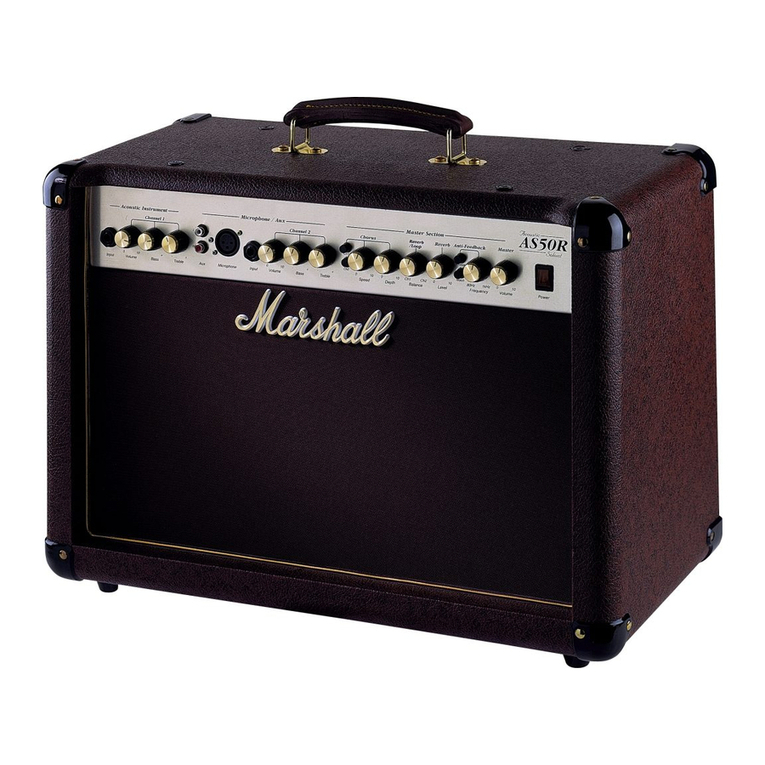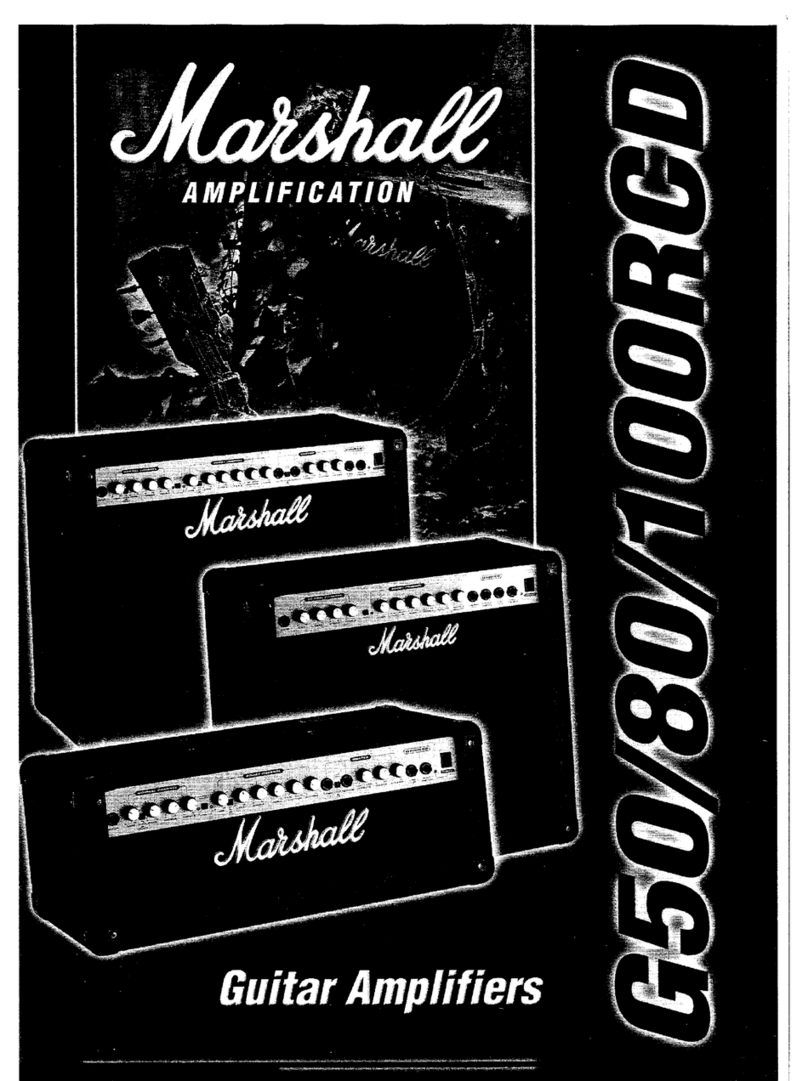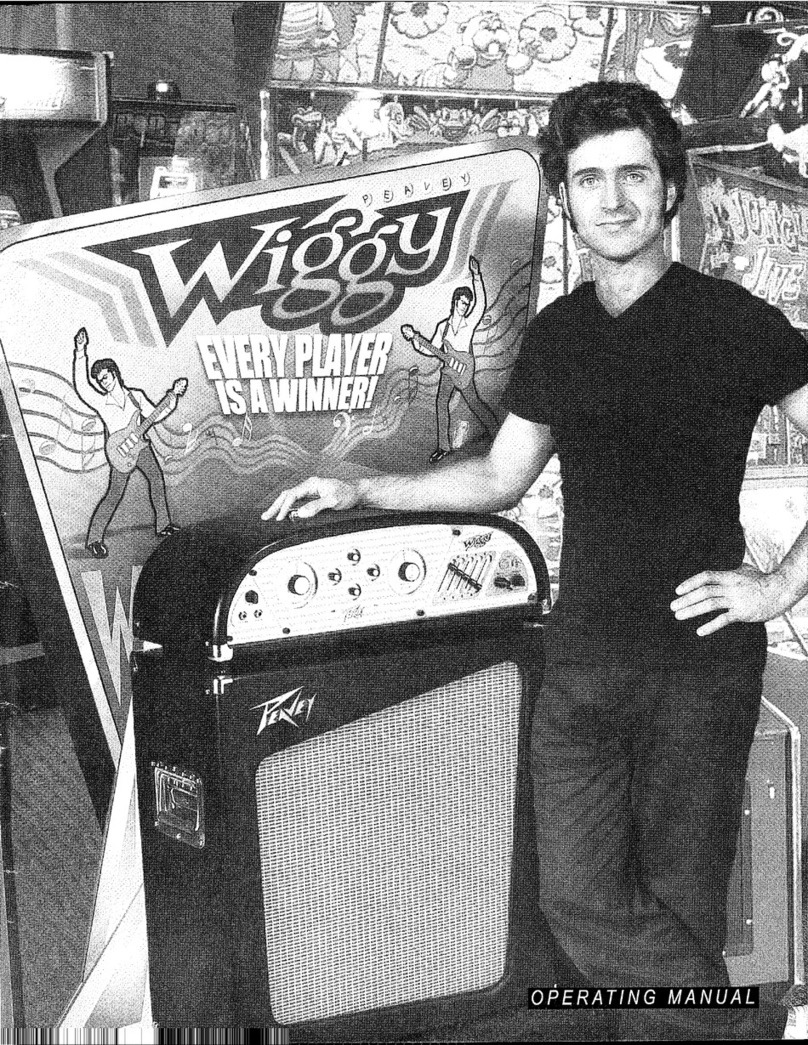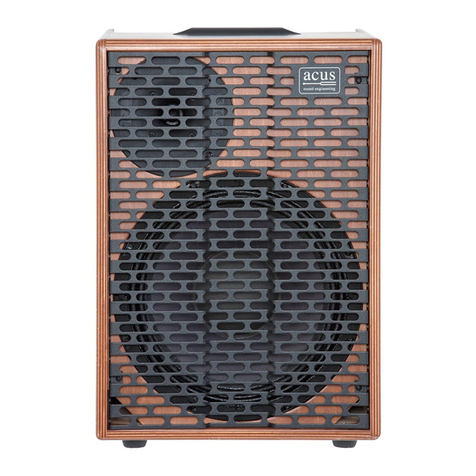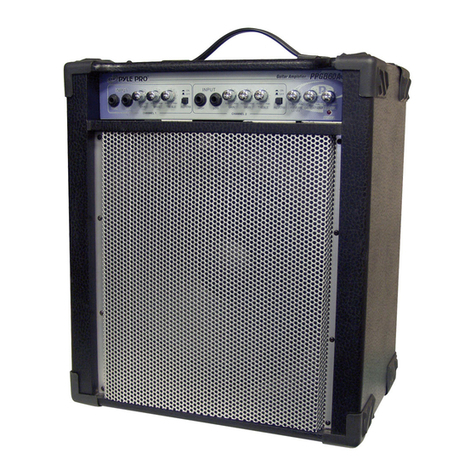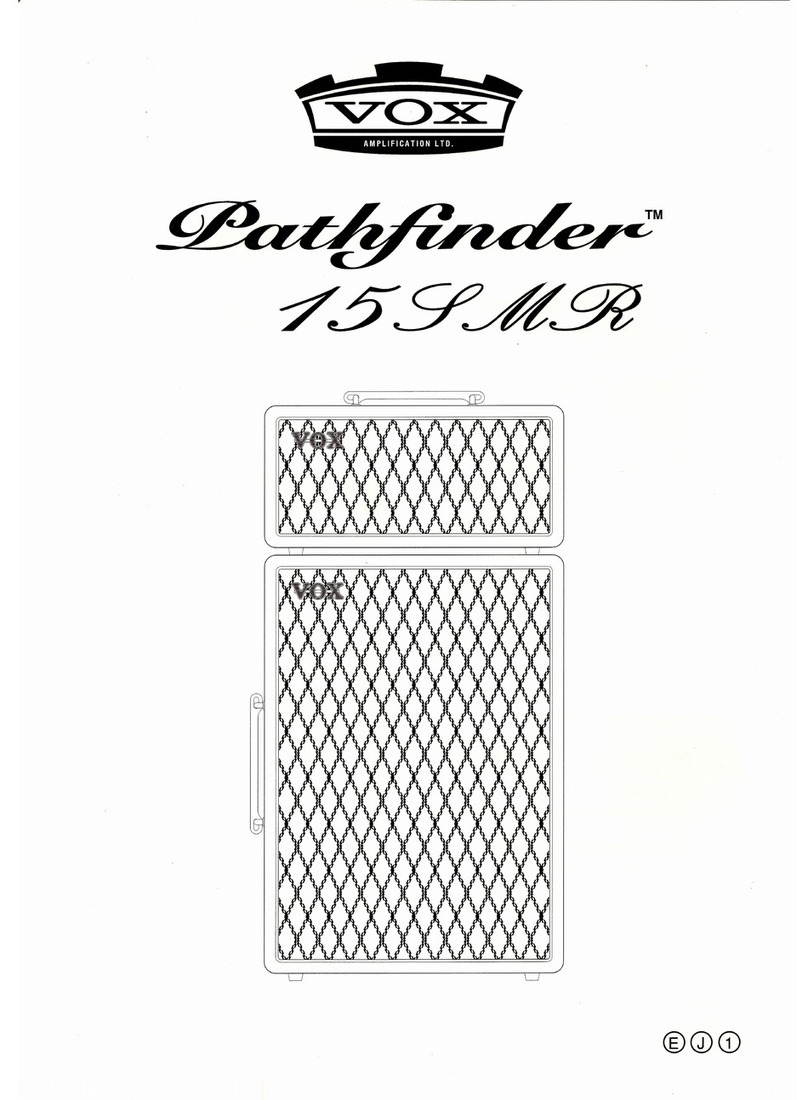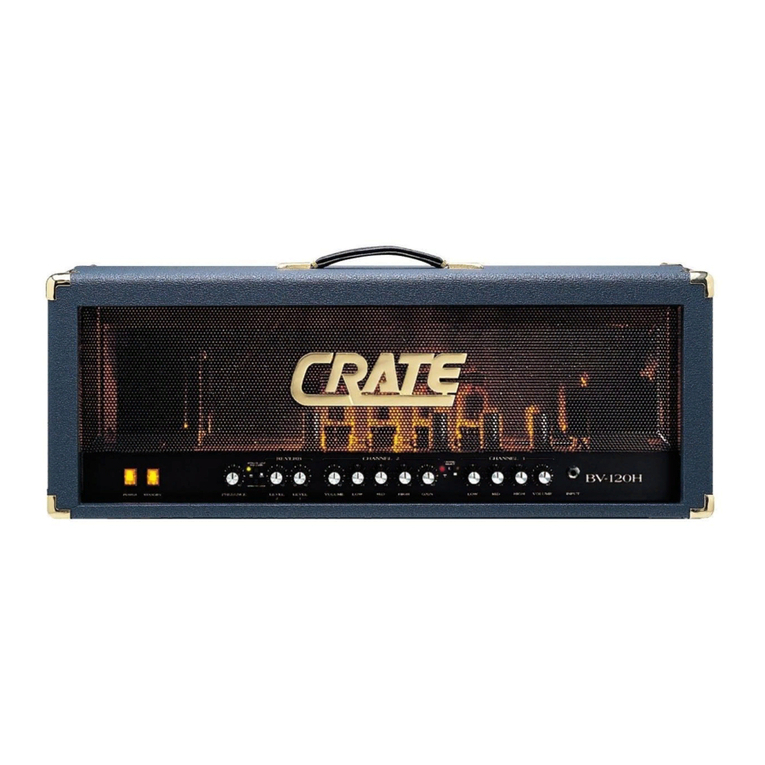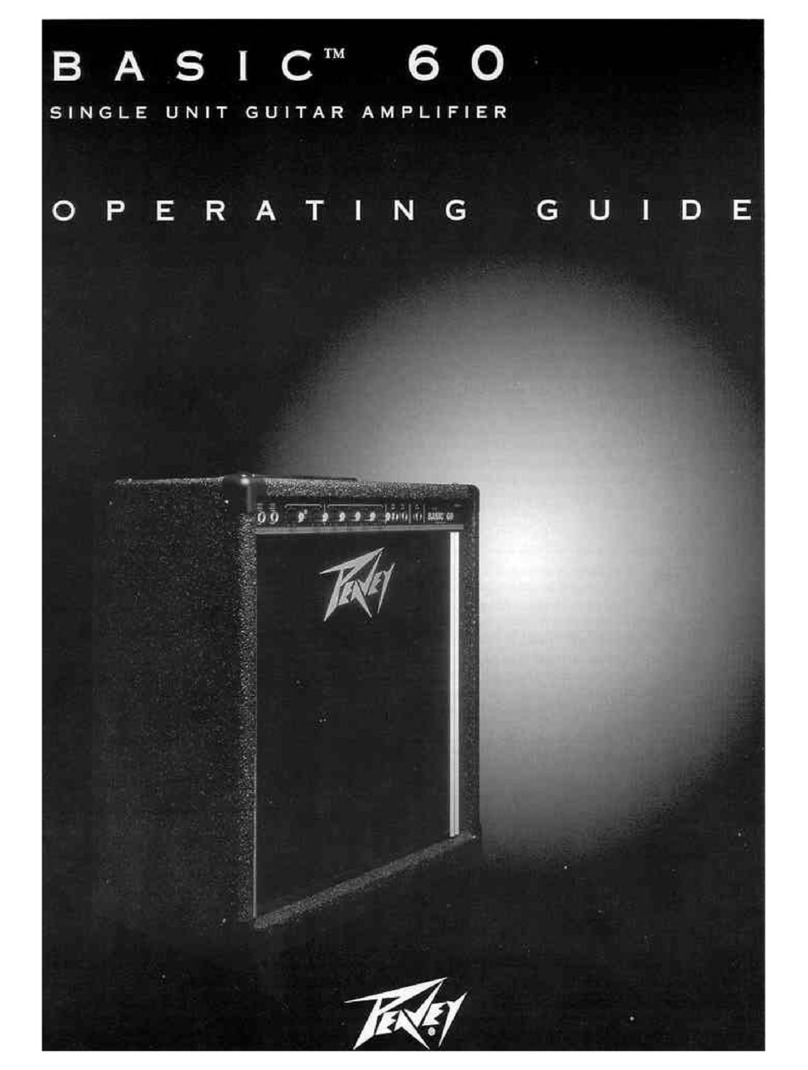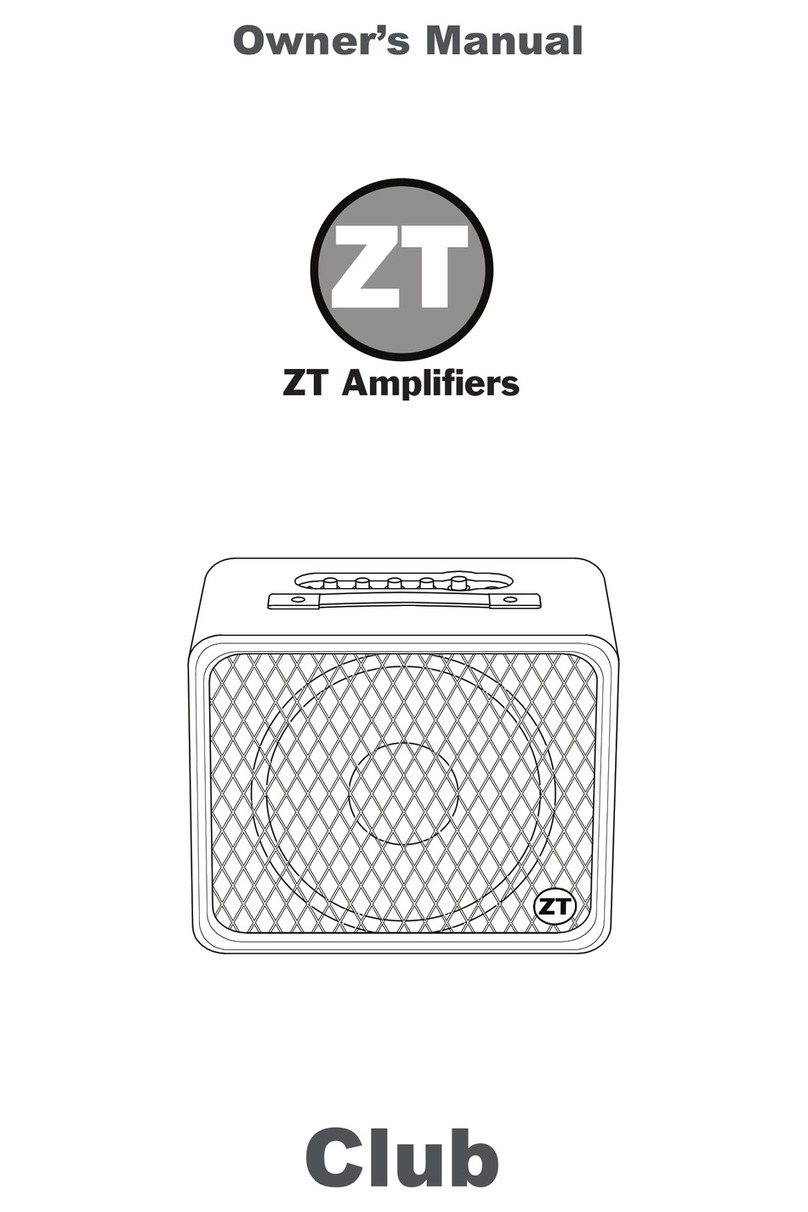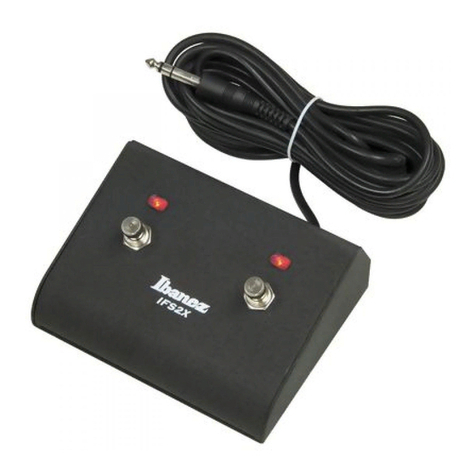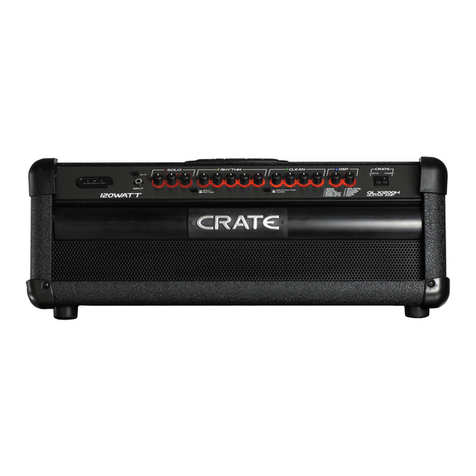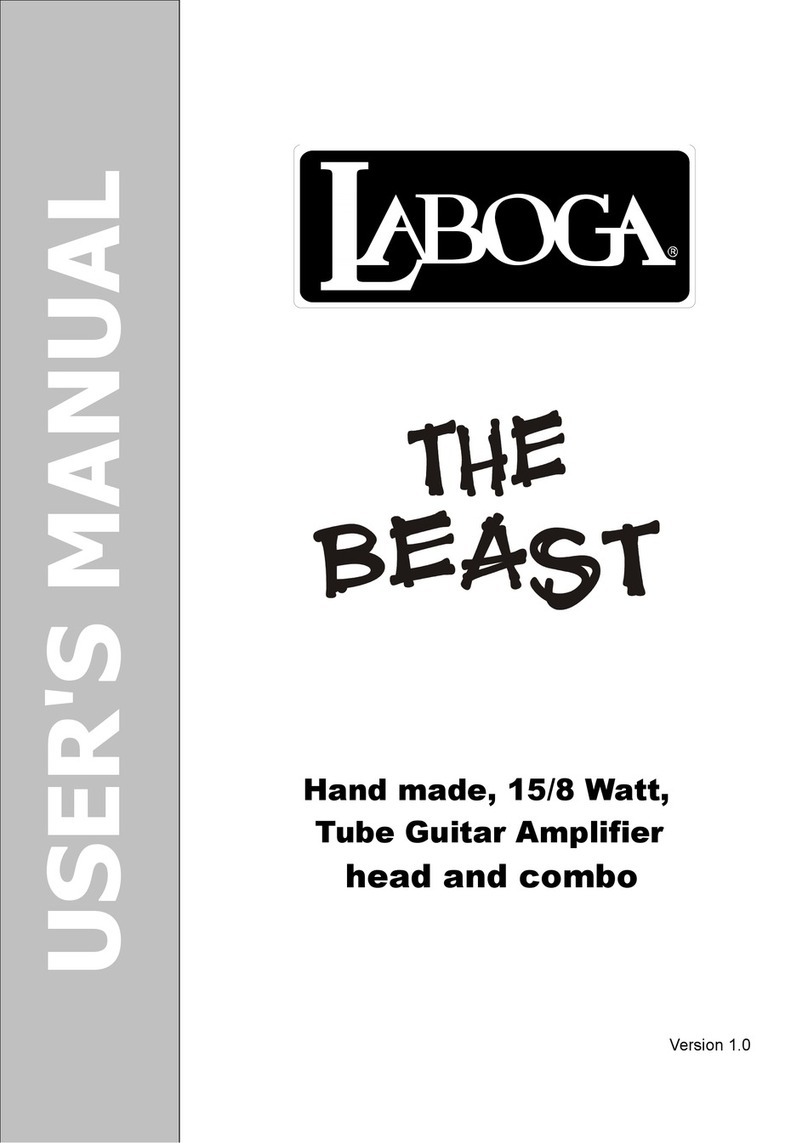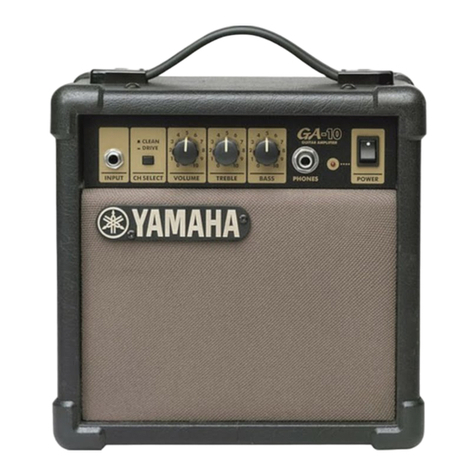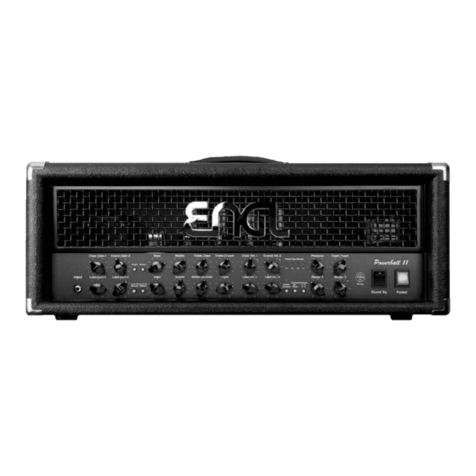1
The JCM-1H head and JCM1-C combo are
1-Watt valve amplifiers voiced to emulate the
Marshall tones that dominated the ’80s, but at a
controllable, home-friendly volume.
In 1981, Marshall introduced the now iconic
JCM800 range and once again redefined the rock
guitar sound. The aggressive, biting sound of the
2203/2204 amplifiers became the “must have”
sound of the NWOBHM (New Wave of British
Heavy Metal) and also the “hair metal” movement
that was exploding on LA’s infamous Sunset Strip.
That said, it was also adopted by many other
genres. The late ’80s saw the introduction of the
split-channel amplifiers and the revered Jubilee
Series. These upped the ante with clipping circuits
to increase the overdrive. Now those classic
Master Volume sounds have been captured in the
JCM-1 H and JCM-1C, with a little extra “split-
channel” gain available for good measure.
The 3-band EQ section of Bass, Middle and
Treble allow for both fine tonal tuning and extreme
sonic shaping – rich, full-bodied crunch and
scooped metal tones are just a few dial turns
away. The Boost switch adjusts
the pre-amp between classic
Master Volume and later Split Channel voicings.
Controls for both Master and Pre-Amp (Gain)
Volume govern the JCM-1’s overall output and
overdrive respectively.
Internally, the pre-amp is driven by two ECC83
(12AX7) valves with one ECC82 (12AU7) valve
in the power amp. The power-stage is configured
as a ‘push pull’ amplifier, just like the famous
JCM800 amplifiers of the period, delivering that
classic bark and growl with a surprising amount
of “thump” for an amp of the JCM-1’s diminutive
stature.
The JCM-1 combo is fitted with a 10" 16Ω
Celestion speaker, specially voiced to give the
best balance between a compact size and a full
sound. Both the combo and the head can drive
an external speaker cabinet of either 16Ωor 8Ωat
full power via the corresponding speaker output
sockets on the rear panel. Both amplifiers are very
happy driving a full 4x12" cabinet for the ultimate
in mini Marshall ’80s tone.
Overview
ENGLISH
Follow all instructions and heed all warnings.
KEEP THESE INSTRUCTIONS.
Warning:
Before going any further, make sure that your amplifier is compatible with your electrical supply. If you have any doubt, please seek help from
a qualified technician – your Marshall dealer can help you in this respect.
Mains Input & Fuse:
Your amplifier is provided with either a detachable mains (power) lead which should be connected to the mains input socket on the rear panel
of the amplifier or a fixed mains (power) lead attached to the rear of the amplifier.
The specific mains input voltage rating that your amplifier has been manufactured for is indicated on the rear panel of the amplifier.
The correct value and type of mains fuse for valve amplifiers is specified on the rear panel of the amplifier.
NEVER attempt to bypass the fuse or fit one of the incorrect value or type.
Transporting your equipment:
Please ensure that your amplifier is switched off and unplugged from the mains electricity supply and that all removable cables have been
disconnected from your equipment before attempting to move it.
Important set up information:
1. Make sure that the cabinet(s)/speakers, where appropriate, are connected to the correct impedance LOUDSPEAKER jack(s) on the
rear panel of the amplifier. See the Speaker Output guides in this handbook, if applicable, for specific information regarding impedance
matching. When using an extension cabinet make sure that you are using a proper speaker cable. Never use a screened (shielded) guitar
cable for this purpose.
WARNING! Failure to do any of the above may damage your amplifier.
2. Ensure that the VOLUME controls on the front panel are set to zero.
3. For amplifiers provided with a detachable mains (power) lead, connect the supplied mains (power) lead into the MAINS INPUT on the rear
panel first and then into an electrical outlet
4. Plug your guitar into the INPUT jack socket on the front panel.
5. Turn the front panel POWER switch on and, if a valve amplifier, wait a couple of minutes before going to point 6.
6. Turn the volumes up to your preferred level and your amp is ready to play.
EUROPE ONLY – Note: This equipment has been tested and found to comply with the requirements of the EMC Directive
(Environments E1, E2, and E3 EN 55103-1/2) and the Low Voltage Directive in the E.U.
EUROPE ONLY – Note: The Peak Inrush current for the JCM-1H and the JCM-1C is 1.5A.
From “the Guv’nor” Jim Marshall
Congratulations on purchasing one of our Limited Edition series
of 1-Watt heads and combos that celebrate Marshall’s
50th Anniversary. Each one is made in England with pride and
commemorates the distinctive tonal character, features and
iconic appearance of a specific decade – ’60s, ’70s, ’80s,’90s
and present day. The JCM-1H head and JCM-1C combo are
the third pair in the series and pay tribute to the Marshall amps
that literally dominated the sound of hard rock and heavy metal
in the ‘80s...
The 1980s was a huge, game changing, decade for guitar
music. A more aggressive sound was being sought by the
emerging rock and metal bands of the era, with many finding
the tone of the newly released JCM800 Series, especially the
100-Watt, 2203 head, exactly what they were looking for. The
innovation of Marshall’s Master Volume technology also meant
that the overdriven sound of these new Marshalls could now be
played at any volume.
The 1-Watt amp you now own pays homage to both the tone
and look of that all-important third decade and does so at a
very “studio” or “home friendly” volume. The front panel of
your amp is very simple, but extremely effective, and I’m sure
that its touch responsive, easily-overdriven tones will give you
countless hours of playing pleasure.
Welcome to the Marshall family!
Yours Sincerely,
Jim Marshall
